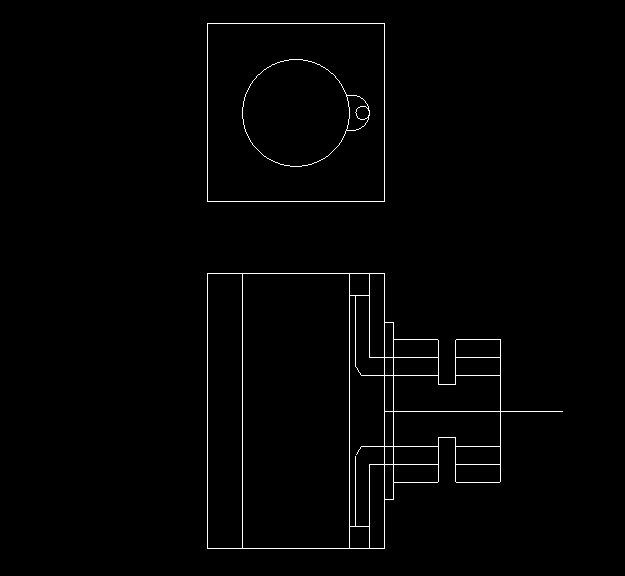I dont have stock yet for the cylinders but I thought I should probably start tooling up. One of the steps in making the cylinders is drilling a hole for the steam ports at a 15 degree angle away from the cylinder centerline. Since I have to repeat this step several times I didnt want to have to measure the angle and re-center the drill for each hole. So, I made an angle gauge.
The dimensions arent critical, however, the angles are. This piece is roughly 1 1/2x 7/8x1/2 inch. The critical angles are the bottom 90 between the vertical and horizontal faces, and the 15 degree face that departs from vertical.
First, start with a piece that is square and parallel. I set the 15 degree angle on the protractor and lined up the work in the vise. I had originally marked out the work with a small foot at the bottom of the angle that would have been 90 degrees from the angled face but afterwards thought a straight face would be more useful for any future set-ups.

The block was marked for future reference, a few strokes across some sandpaper and a quick wipe of some furniture wax for protection and its ready to go!


In use the block will be set vertically against the vise stop and the front face (large bearing) of the work piece leaned into it against the angled face. If all goes well the drill should always be right above the mark.
The dimensions arent critical, however, the angles are. This piece is roughly 1 1/2x 7/8x1/2 inch. The critical angles are the bottom 90 between the vertical and horizontal faces, and the 15 degree face that departs from vertical.
First, start with a piece that is square and parallel. I set the 15 degree angle on the protractor and lined up the work in the vise. I had originally marked out the work with a small foot at the bottom of the angle that would have been 90 degrees from the angled face but afterwards thought a straight face would be more useful for any future set-ups.

The block was marked for future reference, a few strokes across some sandpaper and a quick wipe of some furniture wax for protection and its ready to go!


In use the block will be set vertically against the vise stop and the front face (large bearing) of the work piece leaned into it against the angled face. If all goes well the drill should always be right above the mark.













